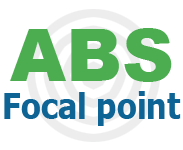
category_news
ABS resources: where to find what?
Since the adoption of the Nagoya Protocol over ten years ago, the amount of resources for access and benefit-sharing and compliance is ever increasing. In this article we take a closer look at a number of ABS resources for users of genetic resources.
Since there are many ABS resources available, we think it would be useful to highlight some websites and best practices below. However, do take caution when using information provided by unofficial sources, as the information may be outdated or incorrect. Before using genetic resources, it is recommended to check the information on the provider country in the ABS Clearing-House and, if uncertainties remain, to contact the ABS National Focal Point (NFP) of the provider country through the contact details provided in the ABS Clearing-House to confirm the national ABS legislation.
Websites
The ABS Clearing-House (ABSCH) website is the official platform for ABS legislation and should be the first stop of every (future) user of genetic resources. The ABSCH provides national ABS legislation and legal requirements, the contact details of ABS National Focal Points and Competent National Authorities, ABS procedures, internationally recognised certificates of compliance (IRCC) and more.
If you are reading this article, you are probably familiar with the Dutch ABS Focal Point website, which provides guidance for access to genetic resources from the Netherlands and abroad, gives background information on international rules and Dutch policy, and explains terms that are often used. Our ABS help tool aims to help you determine if your activities are in scope of the EU ABS Regulation and, if this is the case, your obligations under the Regulation.
The ABS Information Forum aims to assist taxonomists and other scientists in their understanding of ABS and their capacity to manage ABS requirements. Apart from providing a large amount of background information, it also lists a host of tools and resources, including codes of conduct, best practices, model agreements and a self-assessment tool for ABS compliance by organisations.
The Resources webpage of the Union of Ethical Biotrade (UEBT) contains various resources for businesses, including case studies and ABS fact sheets for a number of countries and regions, which give a brief overview of rules, requirements, considerations and relevant authorities.
A new addition is the German Nagoya Protocol HuB, which is financed by the German government. While it is primarily targeted at researchers in the academic sector in Germany, it provides clear, easy-to-understand information about ABS and compliance for all users of genetic resources. Also interesting for users of genetic resources are the “Compliance Stories”, aimed at sharing experiences of users.
Best practices
Best practices on access and benefit-sharing can help users of genetic resources to comply with the EU ABS Regulation (Regulation (EU) 511/2014). The Code of Conduct and Best Practice of the Consortium of European Taxonomic Facilities (CETAF) is currently the only best practice that is officially recognised by the European Commission. It provides a framework to guide collection holders and researchers within the CETAF community in complying with ABS requirements in their daily work.
Other notable best practices and guides are the Best Practice of the Global Genome Biodiversity Network (GBBN), the Guide to ABS compliance of the European Marine Biological Resource Centre (EMBRC), the Best Practice Manual of the Microbial Resource Research Infrastructure (MIRRI), the Code of Practice of the International Federation of Pharmaceutical Manufacturers & Associations (IFPMA), and the Guidance Document of the International Fragrance Association (IFRA) and the International Organization of the Flavor Industry (IOFI). These documents can be found on the ABS Focal Point page ‘Downloads and links’. For more information on best practices, see Article 8 of the EU ABS Regulation.
More ABS resources on the ABS Focal Point website
The ABS Focal Point page ‘Downloads and links’ provides a more extensive list of documents and links, including codes of conducts, best practices and tools, COP-MOP Decision booklets, the CBD series ‘Bioscience at a Crossroads’, the FAO State of the World reports, more in-depth information on Access and Benefit-Sharing and the implementation of ABS measures across sectors, and links to pages with further ABS information.
